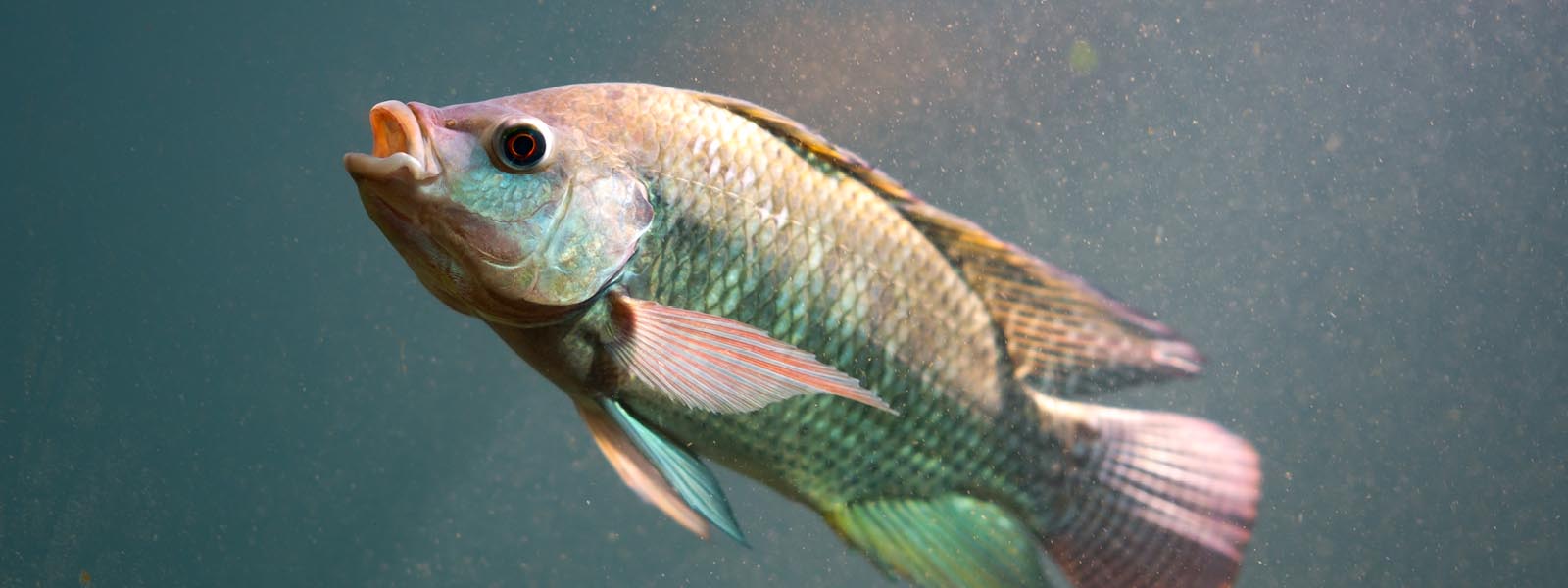Tilapia

Oreochromis mossambicus (Mozambique Tilapia)
Tilapia mariae (Spotted Tilapia)
Tilapia are restricted noxious fish under the Biosecurity Act 2014.
Tilapia are a freshwater fish introduced in the 1920s as an ornamental fish. Females carry eggs and small fry in their mouths which can survive for a long time after the adult fish dies.
The majority of new infestations are caused by humans releasing fish (alive or dead) into waterways. Tilapia can survive temperatures between eight and 42ºC including high-saline waters and low-dissolved oxygen.
Tilapia impact native fish by competing for habitat and food and can quickly outnumber native fish creating a mono culture of fish impacting favoured fishing sites.
Mozambique Tilapia grow to 36cm and are usually dark grey or almost black but can be silver with two – five blotches or spots on their sides. Breeding males are recognised by red tips on their fins. This species feeds mainly on plankton, insects and weeds.
Spotted Tilapia range from dark olive-green to light yellow, have eight or nine bars or blotches on their sides and grow to 30cm. Spotted Tilapia mainly eat plants.
Control includes poisoning in ponds and small dams but not for rivers and streams where native fish may also be killed.
Targeted fishing can assist in reducing numbers in small enclosed waterbodies but this is not considered a long term strategy. Any fish caught must be humanely euthanased and not returned to the water.
